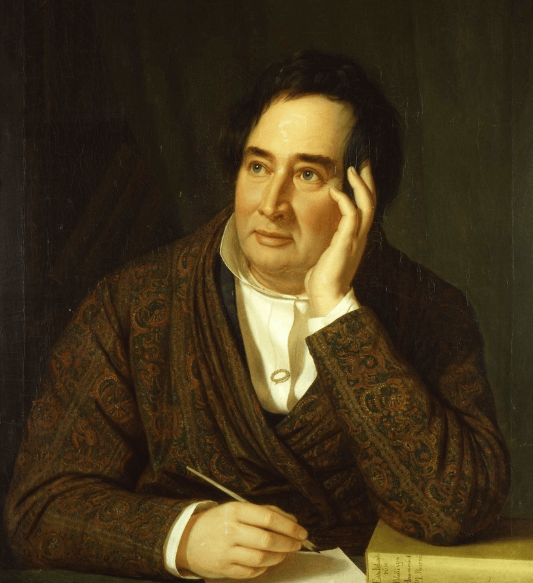Do you know who is Denmark National Poet? In the world of literature, every nation has its own cultural icons, revered for their profound impact on shaping the literary landscape of their respective countries. Denmark is no exception, and at the heart of Danish literature stands the eminent figure of Adam Gottlob Oehlenschläger, celebrated as the national poet of Denmark. This article aims to delve deep into the life and works of this remarkable poet, shedding light on his contributions to Danish literature and his enduring legacy.
Early Life and Background
Born on November 14, 1779, in Vesterbro, Copenhagen, Adam Gottlob Oehlenschläger's journey into the world of literature began at an early age. He showed a keen interest in poetry and storytelling, often captivating his friends and family with his vivid imagination and eloquent prose. As he matured, Oehlenschläger's literary talents continued to flourish, eventually leading him to the University of Copenhagen, where he studied theology and philology.
Denmark National Poet’s Impact on Danish Literature
Introduction of Romanticism
The early 19th century marked a significant turning point in Danish literature, largely attributed to Oehlenschläger's contributions. His groundbreaking work, "Guldhornene" (The Golden Horns), published in 1802, is often regarded as the inception of Danish Romanticism. In this epic poem, he merged the essence of Nordic mythology with the Romantic ideals of emotion, nature, and imagination.
The Golden Age of Danish Literature
Oehlenschläger's influence extended beyond poetry. His contributions to the Danish theater were equally remarkable. His play, "Aladdin," was a pioneering work that combined oriental tales with Danish folk traditions, captivating audiences and setting the stage for a flourishing Danish theater scene.
Oehlenschläger’s Poetry
Apart from "Guldhornene," Oehlenschläger produced a vast body of poetry that resonated with the Danish people. His poems often celebrated the beauty of Denmark's landscapes, its history, and the spirit of its people. His verses were imbued with a sense of national pride and identity, which struck a chord with the Danish population during a time of social and political change.
Denmark National Poet and His Legacy
In 1819, Oehlenschläger was officially honored with the title of Denmark's National Poet. This recognition was a testament to his profound impact on Danish literature and his ability to capture the essence of the Danish spirit in his writings. His poems and plays continue to be studied and celebrated today, ensuring his legacy endures.
FAQs
- What were some of Oehlenschläger's most famous works?
Some of his most renowned works include "Guldhornene," "Aladdin," "Hakon Jarl," and "Correggio."
- How did Oehlenschläger contribute to Danish theater?
Oehlenschläger revolutionized Danish theater by infusing it with oriental and folkloric elements, broadening its appeal and inspiring future playwrights.
- Why was Oehlenschläger named Denmark's National Poet?
Oehlenschläger's ability to encapsulate the Danish spirit and his significant contributions to Danish literature led to this prestigious title, solidifying his place in Danish cultural history.
- What is the significance of "Guldhornene" in Danish literature?
"Guldhornene" is considered the starting point of Danish Romanticism, reshaping the literary landscape of Denmark and influencing generations of poets.
- How does Oehlenschläger's legacy persist today?
His works are still studied and celebrated in Denmark and internationally, and his impact on Danish literature remains profound.
Conclusion
Adam Gottlob Oehlenschläger's journey from a young, imaginative boy in Copenhagen to Denmark's National Poet is a testament to the enduring power of literature. His impact on Danish Romanticism, theater, and poetry is immeasurable, and his legacy continues to inspire writers and poets in Denmark and beyond. As we celebrate his life and works, we are reminded of the timeless beauty of storytelling and its ability to transcend generations and borders.
References
- "Adam Gottlob Oehlenschläger". The Editors of Encyclopaedia Britannica. Encyclopaedia Britannica.
https://www.britannica.com/biography/Adam-Gottlob-Oehlenschlaeger
- "Guldhornene". Danish Language Blog.
https://blogs.transparent.com/danish/guldhornene-the-golden-horns/
- "Danish Literature". Denmark.dk - The official website of Denmark.
https://denmark.dk/culture/literature
- "Adam Oehlenschläger". The Literature Network.
